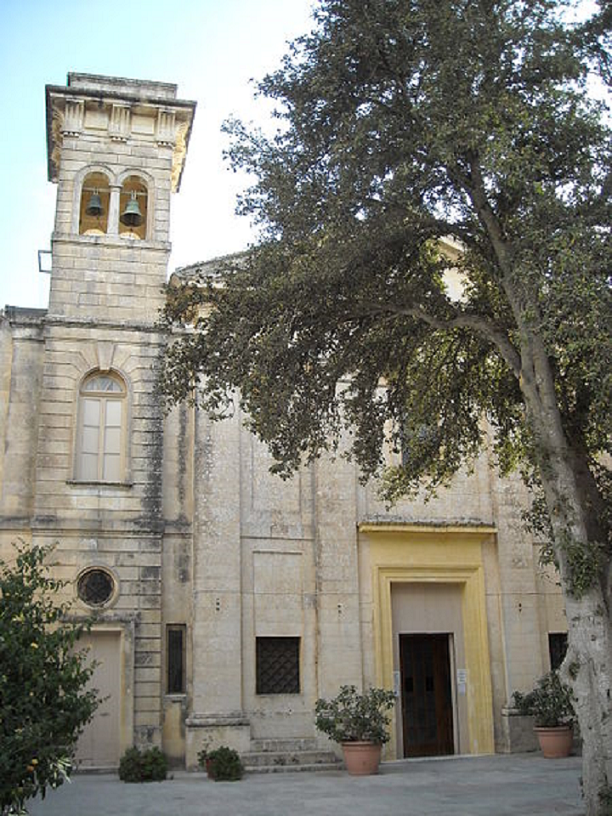Illustration by
FLICKR
Zephyrinus is delighted to publicise
the Traditional Latin Masses,
which are Celebrated in Kent
on a regular Weekly basis on Sundays.
In addition, Traditional Latin Masses
are Celebrated during the Week,
on Feast Days and Holy Days of Obligation.
Illustration by
FLICKR
There is a vibrant and happy group
who attend these Masses
and meet, after Mass, for a lovely Lunch
in various hostelries and locations.
Do come and join them. You will all be most welcome.
Illustration by
FLICKR
Besides Glorifying God in an edifying,
Holy and Traditional manner,
you will see the wonderful Kent countryside
changing throughout the Seasons,
which, in itself, Glorifies God.
MAIDSTONE, KENT.
CHURCH OF SAINT FRANCIS.
Church of Saint Francis,
Maidstone, Kent.
Photo: © Copyright Chris Whippet
and licensed for reuse under this
Traditional Latin Masses are Celebrated
at the
Church of Saint Francis,
126, Week Street,
Maidstone, Kent ME14 1RH,
(next to Maidstone East Railway Station)
at 1230 hrs,
on the FIRST SUNDAY OF EVERY MONTH.
ASHFORD, KENT.
CHURCH OF SAINT SIMON STOCK.
Church of Saint Simon Stock,
Ashford, Kent.
Photo: WIKIMAPI
Traditional Latin Masses are Celebrated
at the
Church of Saint Simon Stock,
Brookfield Road,
Ashford, Kent TN23 4EU,
at 1215 hrs,
on the SECOND SUNDAY OF EVERY MONTH.
TENTERDEN, KENT.
CHURCH OF SAINT ANDREW.
Photo: SAINT ANDREW'S
Traditional Latin Masses are Celebrated
at the
Church of Saint Andrew,
47, Ashford Road,
Tenterden, Kent TN30 6LL,
47, Ashford Road,
Tenterden, Kent TN30 6LL,
at 1200 hrs,
on the THIRD SUNDAY OF EVERY MONTH.
HEADCORN, KENT.
CHURCH OF SAINT THOMAS OF CANTERBURY.
Church of Saint Thomas of Canterbury,
Headcorn, Kent.
Photo © Copyright David Anstiss
and licensed for reuse
under this Creative Commons Licence.
Traditional Latin Masses are Celebrated
at the
Church of Saint Thomas of Canterbury,
Becket Court, 15, Station Road,
Headcorn, Kent TN27 9SB,
(near to Headcorn Railway Station)
at 1200 hrs,
on the FOURTH SUNDAY OF EVERY MONTH.
WHEN THERE IS A FIFTH SUNDAY IN THE MONTH,
THE TRADITIONAL LATIN MASS IS CELEBRATED AT
ASHFORD, KENT.
CHURCH OF SAINT SIMON STOCK.
Saint Simon Stock Church,
Ashford, Kent.
Photo: WIKIMAPIA
Traditional Latin Masses are Celebrated
at the
Church of Saint Simon Stock,
Brookfield Road, Ashford, Kent TN23 4EU,
at 1215 hrs,
on the FIFTH SUNDAY OF EVERY MONTH.
Zephyrinus is grateful to Tony V at PRAY TELL UNCHAINED
for providing information on Usus Antiquior Masses in Ramsgate, Kent.
The Ramsgate Web-Site is THE CATHOLIC PARISH OF RAMSGATE AND MINSTER
Traditional Latin Mass at Saint Augustine's,
Ramsgate, Kent.
Saint Augustine's Shrine,
Ramsgate, Kent.
Image: AUGUSTINE'S SHRINE.
Times of Latin
Usus Antiquior Masses.
RAMSGATE, KENT.
Saint Augustine’s Church,
Saint Augustine’s Road,
Ramsgate,
Kent CT11 9PA.
Telephone: 01843 592 071.
Traditional Latin Masses at
1200 hrs. Sunday.
and
0930 hrs. Friday.
Saint Ethelbert and Saint Gertrude Church,
Ramsgate, Kent.
Illustration: THE CATHOLIC PARISH OF RAMSGATE AND MINSTER
RAMSGATE, KENT.
Saint Ethelbert and Saint Gertrude Church,
72, Hereson Road,
Ramsgate,
Kent CT11 7DS.
Traditional Latin Mass at
0930 hrs.
on Wednesdays.
Saint Augustine's Church,
Tunbridge Wells, Kent.
Illustration: THE CIVIC SOCIETY
TUNBRIDGE WELLS, KENT.
Saint Augustine’s Church,
Crescent Road,
Royal Tunbridge Wells,
Kent TN1 2LY.
Telephone: 01892 522525.
Traditional Latin Mass at
1900 hrs.
on Wednesdays.
Saint Mary's Church,
Chislehurst, Kent.
Illustration: ARCHDIOCESE OF SOUTHWARK
CHISLEHURST, KENT.
Saint Mary's Church
28 Crown Lane,
Chislehurst,
Kent BR7 5PL.
E-Mail: frcbriggs@stmarysrc.org
Telephone: 020 8467 3215.
Traditional Latin Mass at
1100 hrs.
Every Sunday.
and
1930 hrs.
on Fridays.
Saint Austin and Saint Gregory Church,
Margate, Kent.
MARGATE, KENT.
Saint Austin and Saint Gregory Church,
38 Charlotte Place,
Margate,
Kent CT9 1LP.
Telephone: 01843 220825.
E-Mail: info@margatecatholic.org
Traditional Latin Mass at
1130 hrs.
on Sundays
and
1930 hrs.
on Mondays.

THE SAINT ANDREW DAILY MISSAL

THE SAINT ANDREW DAILY MISSAL
Available (in U.K.) from
Available (in U.S.A.) from















































